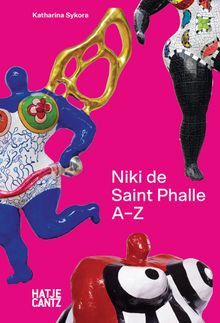| |||||||||||||||||||||||||
ARTIST MONOGRAPHS
|
|
STATUS: Forthcoming | 2/3/2026 This title is not yet published in the U.S. To pre-order or receive notice when the book is available, please email orders @ artbook.com |
 Niki de Saint Phalle: The Grotto
Niki de Saint Phalle: The Grotto
Published by Hatje Cantz.
Text by Ulrich Krempel, Ursula Bode, Ronald Clark, Pierre Marie Lejeune, Hans-Georg Preißel, Birgit Heidrich-Peiers.
The three rooms of the Grotto, built in the Herrenhäuser Gärten in Hanover in 1676, were originally decorated with mussels, crystals, glass and minerals, serving as a place of enchantment and as a cool retreat on hot days. After its restoration for Expo 2000, the inside of the Grotto was newly designed according to plans by French American artist Niki de Saint Phalle (1930–2002). This represents the final work in her remarkable oeuvre, beautifully captured in this volume. The octagonal middle room and those to its left and right were splendidly decorated with mosaics made from colored glass and mirrors, with pebbles and numerous painted sculptures made of fiberglass. The spiral-shaped arrangement of the ornaments around the column in the entrance hall symbolizes spirituality, with the western mirrored room signifying day and life and the eastern blue room night and the cosmos.
PUBLISHER
Hatje Cantz
BOOK FORMAT
Hardcover, 7.5 x 9 in. / 112 pgs / 80 color.
PUBLISHING STATUS
Pub Date 1/20/2026
Forthcoming
DISTRIBUTION
D.A.P. Exclusive
Catalog: SPRING 2025 p. 103
PRODUCT DETAILS
ISBN 9783775758659 TRADE
List Price: $28.00 CAD $42.00
AVAILABILITY
Awaiting stock
STATUS: Forthcoming | 1/20/2026 This title is not yet published in the U.S. To pre-order or receive notice when the book is available, please email orders @ artbook.com |
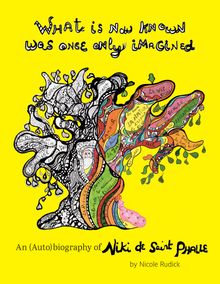 What Is Now Known Was Once Only Imagined: An (Auto)biography of Niki de Saint Phalle
What Is Now Known Was Once Only Imagined: An (Auto)biography of Niki de Saint Phalle
Published by Siglio.
By Nicole Rudick.
Known best for her exuberant, often large-scale sculptural works that celebrate the abundance and complexity of female desire, imagination and creativity, Niki de Saint Phalle viewed making art as a ritual, a performance—a process connecting life to art. This unconventional, illuminated biography, told in the first person in Saint Phalle's voice and her own hand, dilates large and small moments in Saint Phalle's life which she sometimes reveals with great candor, at other times carefully unwinding her secrets. Nicole Rudick, in a kind of collaboration with the artist, has assembled a gorgeous and detailed mosaic of Saint Phalle's visual and textual works from a trove of paintings, drawings, sketches and writings, many previously unpublished or long unavailable, that trace her mistakes and successes, her passions and her radical sense of joy. Saint Phalle's invocation—her "bringing to life"—writes Rudick, "is an apt summation of the overlap of Saint Phalle’s life and art: both a bringing into existence and a bringing to bear. These are visions from the frontiers of consciousness."
Born in France, Niki de Saint Phalle (1930–2002) was raised in New York and began making art at age 23, pursuing a revelatory vision informed both by the monumental works of Antonin Gaudí and the Facteur Cheval, and by aspects of her own life. In addition to her Tirs (“shooting paintings”) and Nanas and her celebrated large-scale projects—including the Stravinsky Fountain at the Centre Pompidou, Golem in Jerusalem and the Tarot Garden in Tuscany—Saint Phalle produced writing and works on paper that delve into her own biography: childhood and her break with her family, marriage to Harry Mathews, motherhood, a long collaborative relationship with Jean Tinguely, numerous health crises and her late, productive years in Southern California. Saint Phalle has most recently been the subject of retrospectives at the Guggenheim Museum Bilbao, in 2015, and at MoMA P.S.1, in 2021.
Nicole Rudick is a critic and an editor. Her writing on art, literature and comics has been published in the New York Review of Books, the New York Times, the New Yorker, Artforum and elsewhere. She was managing editor of the Paris Review for nearly a decade. She is the editor, most recently, of a new edition of Gary Panter’s legendary comic Jimbo: Adventures in Paradise (New York Review Comics, 2021).
PUBLISHER
Siglio
BOOK FORMAT
Hardcover, 7.75 x 10 in. / 268 pgs / 200 color.
PUBLISHING STATUS
Pub Date 2/21/2022
Active
DISTRIBUTION
D.A.P. Exclusive
Catalog: SPRING 2022 p. 7
PRODUCT DETAILS
ISBN 9781938221316 TRADE
List Price: $45.00 CAD $60.00 GBP £35.00
AVAILABILITY
In stock
in stock $45.00 Free Shipping UPS GROUND IN THE CONTINENTAL U.S. |
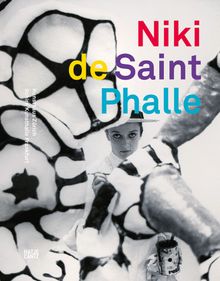 Niki de Saint Phalle: The Retrospective
Niki de Saint Phalle: The Retrospective
Published by Hatje Cantz.
Text by Christoph Becker, Bice Curiger, Katharina Dohm, Sandra Gianfreda, Cathérine Hug, Mickry 3, Nicolas Party.
Niki de Saint Phalle’s sensual Nanas—colorful, buxom female figures—laid the foundation for her international success beyond the art world. But the self-taught artist’s creative spectrum is much broader, and her unconventional oeuvre—ranging from painting and drawing to assemblages, performances, theater, film and architecture—is more subversive and critical of society than is widely assumed. Based in part on her efforts to process her own experiences, Saint Phalle addressed social and political issues, critically questioning institutions and role models in ways that are as relevant today as they have ever been. This publication sheds new light on the artist’s exceptional personality and uncovers an oeuvre that is always surprising and eccentric, emotional, dark and brutal, humorous and cheerful.
Niki de Saint Phalle (1930–2002) was born near Paris and moved to the US in 1933. During her teen years, Saint Phalle was a fashion model and appeared on the cover of Life in 1949 and, three years later, on the cover of French Vogue. At 18 Saint Phalle eloped with author Harry Mathews and moved to Cambridge, Massachusetts, and later to Paris, where she exhibited at the Alexander Iolas Gallery. In 1971 Saint Phalle married Jean Tinguely, and throughout that decade created the public sculptures and parks for which she became celebrated. Saint Phalle died of emphysema in California in May 2002.
PUBLISHER
Hatje Cantz
BOOK FORMAT
Paperback, 9.25 x 11.5 in. / 240 pgs / 195 color.
PUBLISHING STATUS
Pub Date 11/15/2022
Active
DISTRIBUTION
D.A.P. Exclusive
Catalog: FALL 2022 p. 24
PRODUCT DETAILS
ISBN 9783775753005 TRADE
List Price: $55.00 CAD $76.00
AVAILABILITY
In stock
in stock $55.00 Free Shipping UPS GROUND IN THE CONTINENTAL U.S. |
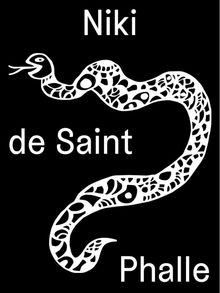 Niki de Saint Phalle: Structures for Life
Niki de Saint Phalle: Structures for Life
Published by MoMA PS1.
Edited with text by Ruba Katrib. Text by Anne Dressen & Nick Mauss, Alex Kitnick, Lanka Tattersall.
This volume brings newfound attention to Niki de Saint Phalle’s (1930-2002) work in architecture and public sculpture, and the commercial products such as perfume and jewelry that she produced to fund these ambitious projects.
Featuring a wide selection of images of her architectural works and rarely seen archival materials, this book places these projects within the context of her larger boundary-defying practice, drawing connections with politically charged works such as the films and books she made in response to the AIDS crisis in the 1980s.
Charting Saint Phalle's many efforts to radically open her practice beyond the confines of the art world, it serves as a survey of her practice from the 1960s until the early 2000s. Edited and with an essay by exhibition curator Ruba Katrib, the publication features new scholarship by Anne Dressen and Nick Mauss, Alex Kitnick, and Lanka Tattersall.
PUBLISHER
MoMA PS1
BOOK FORMAT
Paperback, 6.75 x 9 in. / 232 pgs / 184 color / 62 bw.
PUBLISHING STATUS
Pub Date 3/23/2021
Active
DISTRIBUTION
D.A.P. Exclusive
Catalog: SPRING 2021 p. 102
PRODUCT DETAILS
ISBN 9781942884675 TRADE
List Price: $30.00 CAD $40.00 GBP £26.00
AVAILABILITY
Out of stock
STATUS: Out of stock Temporarily out of stock pending additional inventory. |
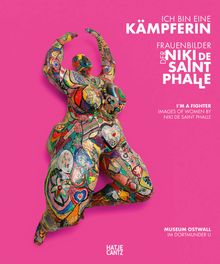 I'm a Fighter: Images of Women by Niki de Saint Phalle
I'm a Fighter: Images of Women by Niki de Saint Phalle
Published by Hatje Cantz.
Text by Ulrich Krempel, Naja Rasmussen, Regina Selter, Karoline Sieg.
Through paintings, assemblages, sculptures, lithographs and drawings, this catalog also takes a look at her lesser-known female figures that depict women tied to their various roles in society: the goddess, the bride, the fertility figure, the mother and the crone. The book also traces the development of de Saint Phalle’s fierce confrontation of the political conflicts of the day.
PUBLISHER
Hatje Cantz
BOOK FORMAT
Hardcover, 9 x 10.75 in. / 176 pgs / 120 color.
PUBLISHING STATUS
Pub Date 4/25/2017
Out of stock indefinitely
DISTRIBUTION
D.A.P. Exclusive
Catalog: SPRING 2017 p. 113
PRODUCT DETAILS
ISBN 9783775742436 TRADE
List Price: $45.00 CAD $60.00
AVAILABILITY
Not available
STATUS: Out of stock indefinitely. |
 Niki de Saint Phalle
Niki de Saint Phalle
Published by La Fábrica/Guggenheim Museum Bilbao.
Text by Bloum Cardenas, Camille Morineau, Catherine Francblin, et al.
Niki de Saint Phalle (1930-2002) was born near Paris and moved to the US in 1933. During her teen years Saint Phalle was a fashion model and appeared on the cover of Life in 1949 and, three years later, on the cover of French Vogue. At 18 Saint Phalle eloped with author Harry Mathews and moved to Cambridge, Massachusetts, and later to Paris, where she exhibited at the Alexander Iolas Gallery. In 1971 Saint Phalle married Jean Tinguely, and throughout that decade created the public sculptures and parks for which she became celebrated. Saint Phalle died of emphysema in California in May 2002.
PUBLISHER
La Fábrica/Guggenheim Museum Bilbao
BOOK FORMAT
Hardcover, 10 x 11.75 in. / 368 pgs / illustrated throughout.
PUBLISHING STATUS
Pub Date 6/23/2015
Active
DISTRIBUTION
D.A.P. Exclusive
Catalog: SPRING 2015 p. 84
PRODUCT DETAILS
ISBN 9788415691983 TRADE
List Price: $65.00 CAD $87.00
AVAILABILITY
In stock
in stock $65.00 Free Shipping UPS GROUND IN THE CONTINENTAL U.S. |
 Niki De Saint Phalle
Niki De Saint Phalle
La Grotte
Published by Hatje Cantz.
Artwork by Niki de Saint Phalle. Edited by Ulrich Krempel. Text by Ronald Clark, Pierre Lejeune.
PUBLISHER
Hatje Cantz
BOOK FORMAT
Hardcover, 9 x 9 in. / 132 pgs / 80 color.
PUBLISHING STATUS
Pub Date 6/2/2003
Out of print
DISTRIBUTION
D.A.P. Exclusive
Catalog: SPRING 2003
PRODUCT DETAILS
ISBN 9783775712767 TRADE
List Price: $19.95 CAD $25.00
AVAILABILITY
Not available
STATUS: Out of print | 5/18/2011 For assistance locating a copy, please see our list of recommended out of print specialists |
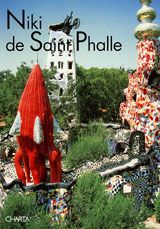 Niki De Saint Phalle: The Tarot Garden
Niki De Saint Phalle: The Tarot Garden
Published by Charta.
Artwork by Niki de Saint Phalle. Contributions by Mario Botta, Enrico Crispolti. Text by Pierre Restany.
PUBLISHER
Charta
BOOK FORMAT
Paperback, 6.75 x 9.5 in. / 120 pgs / 48 color / 40 bw
PUBLISHING STATUS
Pub Date 9/2/1998
No longer our product
DISTRIBUTION
D.A.P. Exclusive
Catalog: FALL 1998
PRODUCT DETAILS
ISBN 9788881581672 TRADE
List Price: $25.00 CAD $30.00
AVAILABILITY
Not available
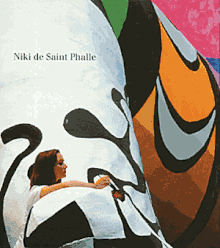 Niki De Saint Phalle
Niki De Saint Phalle
Published by Hatje Cantz.
Artwork by Niki de Saint Phalle. Edited by Uta Grosenik. Text by Pontus Hulton.
PUBLISHER
Hatje Cantz
BOOK FORMAT
Paperback, 9.75 x 11 in. / 312 pgs / 353 color / 137 bw.
PUBLISHING STATUS
Pub Date 3/2/1996
Out of print
DISTRIBUTION
D.A.P. Exclusive
Catalog: SPRING 1996
PRODUCT DETAILS
ISBN 9783775705820 TRADE
List Price: $45.00 CAD $55.00
AVAILABILITY
Not available
STATUS: Out of print | 00/00/00 For assistance locating a copy, please see our list of recommended out of print specialists |
